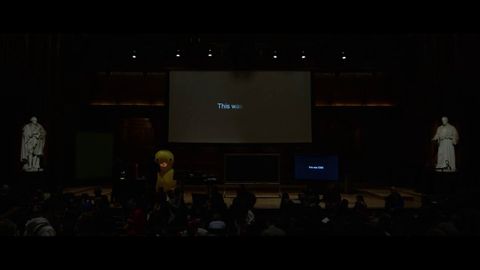
Subtitles & vocabulary
CS50 2019 - Lecture 8 - Information (pre-release)
00
林宜悉 posted on 2020/03/28Save
Video vocabulary
ultimately
US /ˈʌltəmɪtli/
・
UK /ˈʌltɪmətli/
- Adverb
- Done or considered as the final and most important
- Fundamentally; at the most basic level.
B1TOEIC
More apparently
US /əˈpærəntlɪ/
・
UK /əˈpærəntli/
- Adverb
- According to what you heard; from what can be seen
A2TOEIC
More deliberately
US /dɪˈlɪbərɪtlɪ/
・
UK /dɪˈlɪbərətli/
- Adverb
- In a careful, considered manner; on purpose
- Purposely; on purpose
B2TOEIC
More flip
US /flɪp/
・
UK /flɪp/
- Verb (Transitive/Intransitive)
- To turn your body in the air, as in gymnastics
- To move into a different position quickly
- Noun
- Act of turning your body in the air; somersault
- Movement of something from one position to another
B2
More Use Energy
Unlock All Vocabulary
Unlock pronunciation, explanations, and filters
